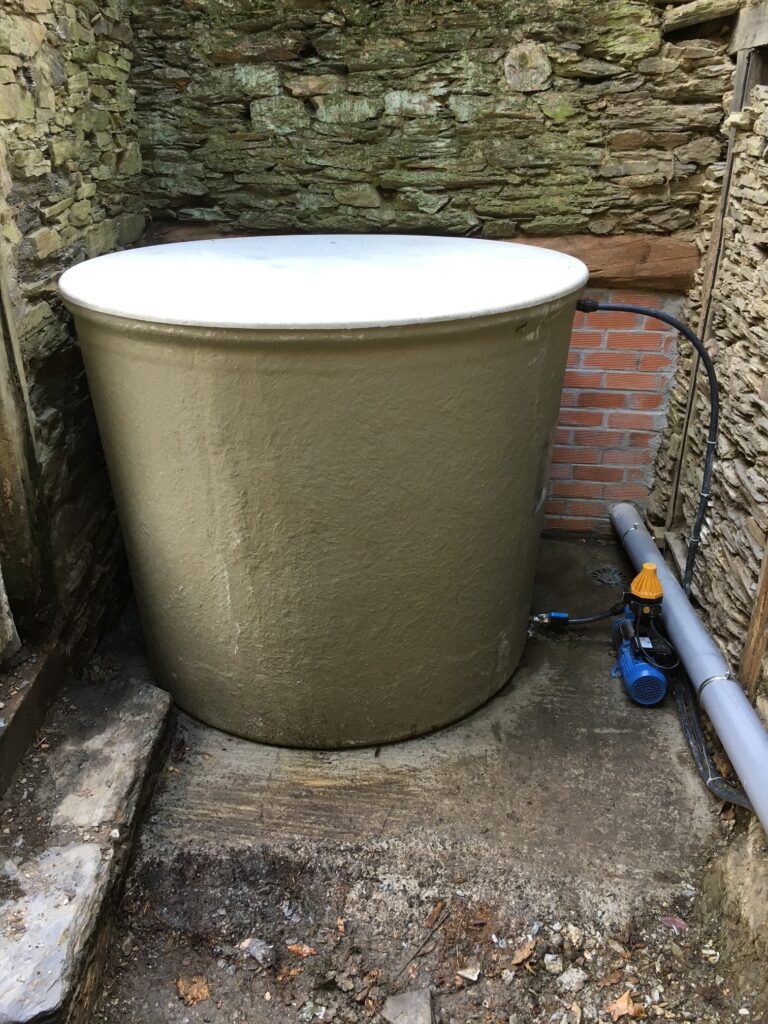In his ‘Rime of the Ancient Mariner’, Coleridge wrote ‘Water, water, every where, nor any drop to drink’. Living in Liñeiras this couplet has become one staple of our autumnal household conversation as the torrent of the winter, spring and early summer gives way to the gentle drip which renders us without nature’s elixir of life from mid-September until the rains return in November.
I think I’ve mentioned this before, the whole village shares a single water deposit, a nearby five by five by two concrete cube which holds 50,000 litres and is spring fed from five kilometres away up in the pristine hills. For much of the year this runs fine, the deposit remains full, excess water constantly running out of the small overflow, and down the hillside.
But as the water table drops, the springs start to dry up, and eventually the deposit starts to empty with a net deficit between supply and usage. This is exacerbated by our neighbours determined inability and willingness to alter their consumption habits and continuing to fill water troughs for livestock and generously irrigate their precious potato crops. As we are one of the highest properties on the network, and the designated water monitors, we get the earliest alarm that there is a problem. This is usually heralded by a ‘failure to flush’, or that soul-destroying drip from the tap when you go to fill the kettle for a brew. That triggers a machete wielding trip to the deposit to battle our way through the undergrowth and confirm our worst fears.
The obligatory circuit of the neighbours follows as we inform them of the shortage, they know what’s coming as we only really see them on their home turf when there is a water problem. They shrug their shoulders, resigned to losing their weekly bath for a few weeks, or tell us that ‘it’s okay as they never use it anyway’, relying on their own private supply – which they then hurriedly go and switch to.
For the last few of years the situation has been dire, forcing us to ration the supply and only allow the pipes to the village to be open for two or three hours per day. As a village we tend to use a whole day of accumulation in just a couple of hours, despite requests to be frugal, so to ensure we get at least those few hours a day for everyone we have to be cruel to be kind.
Our neighbours know it irked us, and while they didn’t make any moves to moderate their usage, they did seem to sympathise.
We finally decided that enough was enough and secretly, under the cover of a foggy November early morning we installed a 4,000 litre local deposit in one of our ruined buildings, enough to supply ourselves for twenty days of drought, or our apartments and ourselves for at least a good week. We felt very guilty doing it, the deposit is hidden behind a locked door and out of sight of our neighbours, but we had no option for peace of mind.
It took a week’s preparation to lay the reinforced concrete plinth and plumb in the necessary pipework, and electrics for the pressure pump to ensure that we had a working system. But once it was up and running, and full to the brim, we were mightily relieved and knew that we’d made a wise investment.
The system now operates in such a way that when we limit the village to their two hours of water a day, those two hours will replenish our tank, so we always have a full tank unless the village is totally without water for an extended period. We still manage the supply for the village, and outwardly sympathise with our villagers, but sneakily we have no worries or breaks in our own supply.



nice to see you back blogging.
If it is a supply for you and the airBnB rental should the supply not be chlorinated? Storing water for long periods in tanks without sanitizing it could allow some bacteria growth.
How high is this above the occupied buildings? If the taps are open in the buildings I wonder if the supply not going to be without problems as guests cannot be restricted on their use can they?
What happened to the Bed and Breakfast plans? The last you wrote was that the architect, who could not be named, was submitting plans to the Junta.
Hi Colin, good to be back. I’ll try and answer your questions.
The water supply is treated between the tank and supply points to the rental houses with UV, a ceramic filter, a particulate filter and then chlorinated. The tank is essentially a buffer and all our water goes through it so that there is a constant churn and throughput. The tank is on the same level as the property so we have to use a pressure pump which is adjustable and currently set at 1.7 bar with perfect water pressure for the fittings. It cost a few cents a day to run and if the power goes out we can by-pass it and take the gravity fed feed from the village deposit. Guests won’t be restricted, the tank is easily sufficient for twenty-four hours of use (4,000 litres) and even in the worst times of having to cut supply to a few hours a day, the buffer tank will get re-filled in those few hours that the supply is open. Normal operation (48 weeks a year) there are no restrictions whatsoever.
We ditched the Bed & Breakfast in favour of two self catering houses for short-term summer lets. One is a two bedroom and the other a single bedroom.